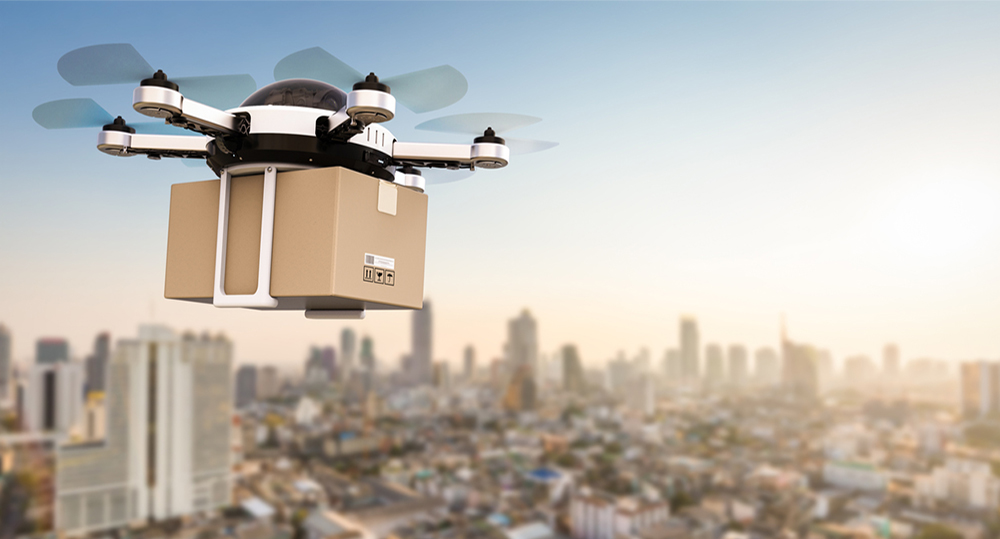Drones that deliver blood may be the next new trend in American healthcare as it has proven to be successful in other areas of the world where the need for blood can be a matter of life or death.
In 2016, Silicon Valley startup Zipline began using drones to deliver blood in Rwanda, reports NBC News.
Zipline’s battery powered drones are made in Half Moon Bay, California. They look like small planes, weigh about 25 pounds, fly at speeds of up to 80 miles per hour and do not need to be remotely controlled. The drones are also able to carry up to four pounds of blood or other medical supplies up to 50 miles.
The drones, ideal for areas with few or poor roads, drop the supplies using a parachute once it reaches its destination. The drone then returns to its launch site for another delivery.
“We had heard about this big problem in places with poor road infrastructure that health care suffers a lot because they couldn’t get supplies to doctors when they needed them,” said Keenan Wyrobek, Zipline’s chief technologist.
Dr. VJ Periyakoil, an associate professor of medicine at the Stanford University Medical Center, says drones provide opportunities to bring essential medical services to people or clinics in remote parts of the U.S.
“When people are very isolated and doctors in these clinics have very limited resources, anything that can bring them supplies that they need in a timely fashion without things getting spoiled on the way is always a welcome use of technology,” she said. “Anything that can help with mitigating barriers to access is something that would be of great service to all patients anywhere.”
The drones also help to reduce the amount of blood that has to be discarded, as up to 20 percent of donor blood in some areas in the U.S. “expires on shelves”, Wyrobek adds. In Rwanda, the Zipline drones have reduced the waste of blood products by more than 95 percent.
Zipline launched the world’s first national drone delivery operation in Rwanda in October of 2016, according to a press release from the company. The company was contracted by the Government of Rwanda to establish a distribution center with 15 drones to deliver blood, plasma and platelets to twenty-one hospitals across the western half of the country.
So far, Zipline has flown over 186,000 miles and delivered 7,000 units of blood in 4,000 flights. Approximately a third of the deliveries were in life or death situations, says the company. It now accounts for more than 20 percent of Rwanda’s blood supply outside of the capital of Kigali.
Zipline is one of several companies that plan to bring their service to the U.S. later this year.
FAA to Approve 10 Drone Projects for Pilot Program
In January, the Federal Aviation Administration announced its creation of the UAS Integration Pilot Program, designed as an opportunity for state, local and tribal governments to partner with private sector entities to help accelerate the development and deployment of safe commercial drone aviation.
The FAA is currently reviewing over 150 proposals from cities requesting the use of drones to deliver blood and other medical supplies to hospitals and will approve 10 projects to move forward by May 7, reports CBS News.
Under current FAA regulations, drones are restricted from flying beyond the line of sight of the operator. Those restrictions would be waived for the 10 pilot projects.
Dr. Tho Pham with the Stanford Blood Center, located in the heart of Silicon Valley, says his team collects about 200 pints of blood each day and that most of the supply is stored at the hospital. However, there is sometimes need for more.
“You can’t plan for emergencies and that’s where time becomes even more crucial,” Pham said.
A courier service currently transports blood for the hospital but the process can be slow.
“It depends on the time of day, courier availability, traffic conditions, anywhere from 30 to 60 minutes,” according to Pham. With a drone, “Ten minutes or less,” he adds.
“Right now we’re talking about drones delivering blood. But I think of it more generally as a drone delivering medical supplies. And when you do that, you know there’s a whole world out there that you can sort of change.”
The American Red Cross is currently the largest supplier of blood in the U.S. and relies mostly on ground transportation for blood deliveries.
Jodi Sheedy, a spokesperson for the Red Cross, says there are no plans to implement drone deliveries until the technology has been further tested and evaluated.







